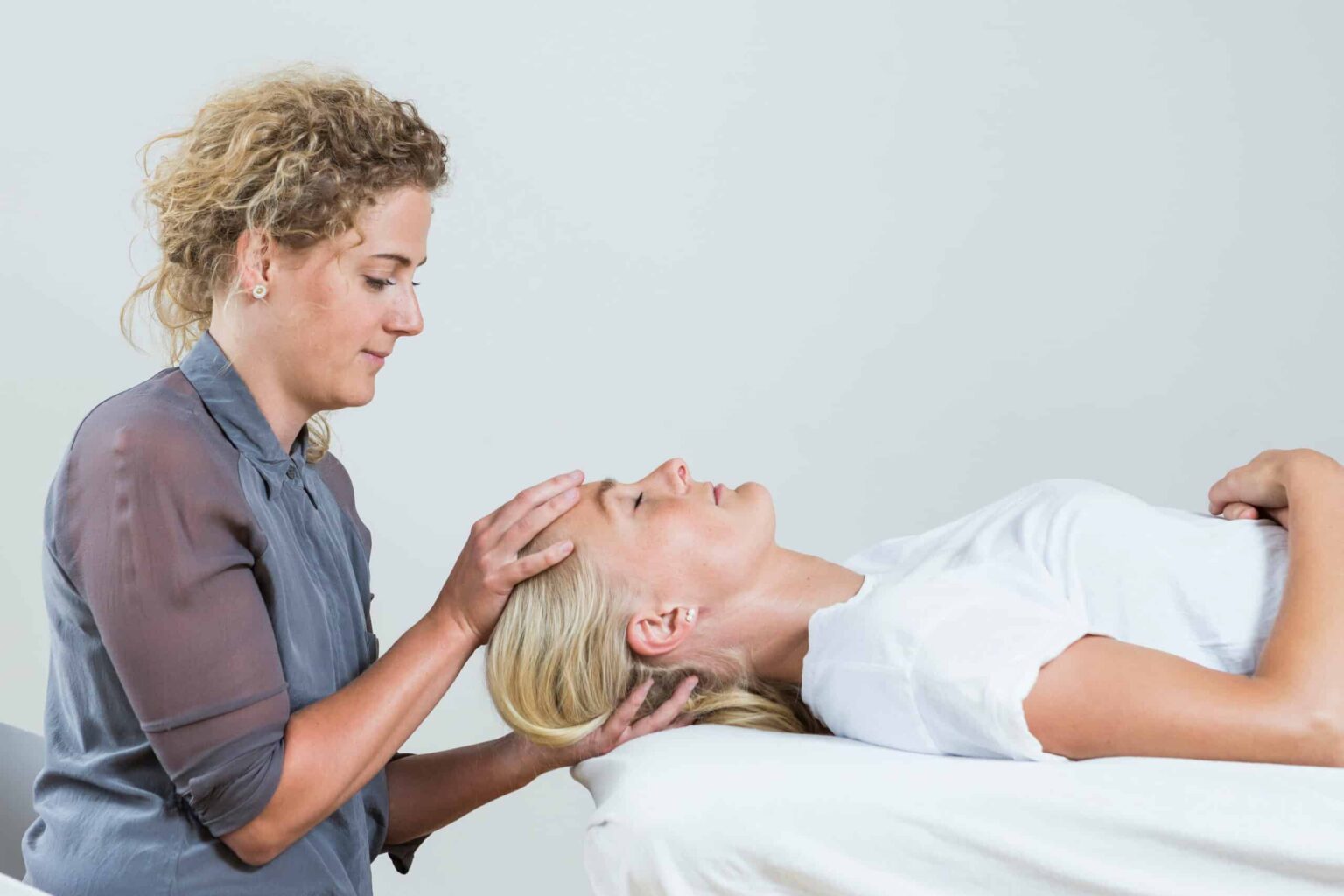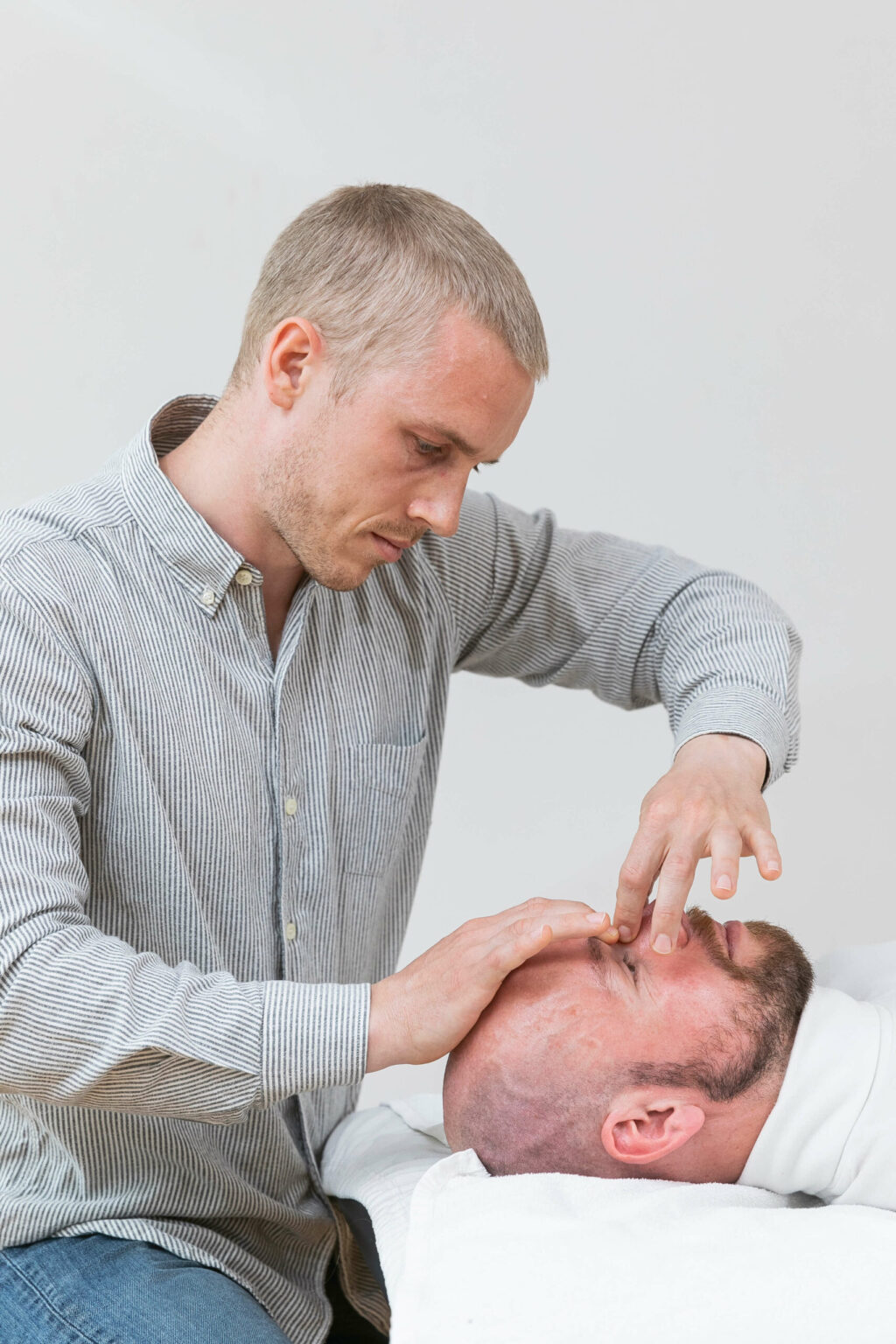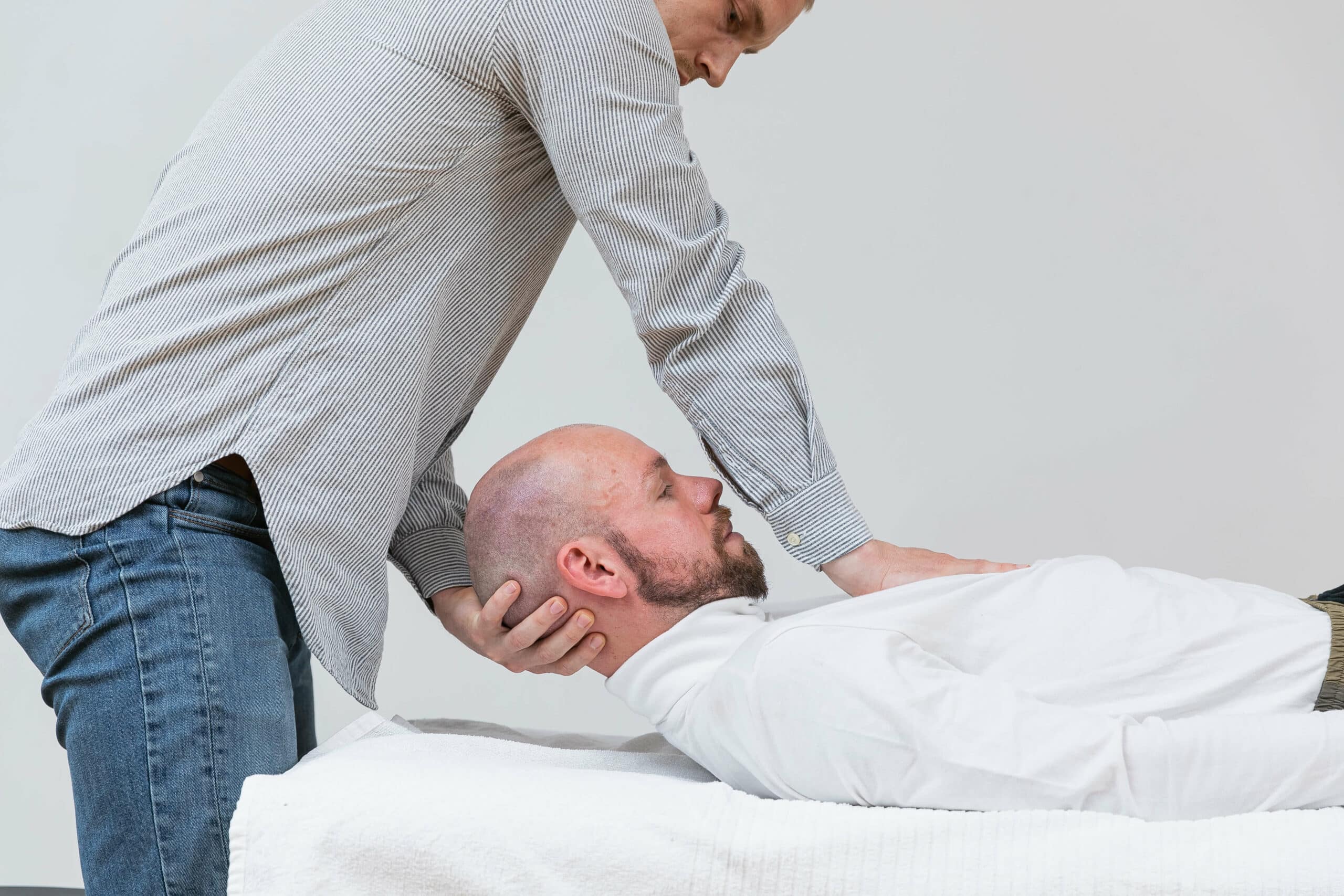We treat
Vestibular dysfunction
Learn more about vestibular dysfunction
What is vestibular dysfunction?
Vestibular dysfunction is a disturbance in the body’s balance system due to an imbalance of the vestibular system in the inner ear. A distinction is generally made between central and peripheral vestibular dysfunctions or both at the same time. The symptoms of peripheral and central vestibular dysfunction can overlap, and a targeted physical examination will often help differentiate between the two. Peripheral dysfunction can be caused by effects on the inner ear and the vestibular nerve, which is our 8th cranial nerve, while central dysfunction can be caused by damage to structures in the central nervous system that receive and register signals from the vestibular system.
Ear crystals? Book an appointment today
Jump to section [Vis]
Vestibular dysfunction problems can have significant personal and societal costs in terms of lost work days and treatment costs. Studies show that the prevalence of dizziness in approximately 5,000 adults between the ages of 18 and 79 years shows that about 23 percent had experienced dizziness within 12 months.
4.8 percent of the study population suffered from vestibular dysfunction. It is also known that the prevalence of vestibular dysfunction increases with age.
Many people will experience vestibular dysfunction. Many times the symptoms resolve within a few hours or minutes, but in some cases the symptoms persist.
According to Sundhed.dk, up to 93% of dizziness consultations to the emergency room are due to either ear crystals (BPPV), viruses on the balance nerve or Meniere’s disease.
Symptoms of vestibular dysfunction
Symptoms of vestibular dysfunction include a variety of symptoms: dizziness, nausea and vomiting, discomfort with head movements, spontaneous nystagmus, unsteady gait, and postural instability. The occurrence of each of these symptoms varies, and there is no single symptom for vestibular dysfunction and may be the same for both peripheral and central dysfunctions. A thorough examination and history are therefore necessary to distinguish between the two.

What is vestibular vertigo?
Vestibular dizziness can be caused by diseases of the vestibular system and associated nerve pathways. This causes an imbalance between the vestibular, visual and proprioceptive systems, which are the three senses that help form our balance. In addition, the vestibular sense must register and send the signal to the blood pressure to increase with movement. For example, if you get dizzy from standing up quickly, it is due to the blood pressure not having time to rise to the head. There are several different forms of dizziness and they are categorized into four different types:
- Vertigo: The feeling of the surroundings spinning around itself.
- Dys-equilibrium: The feeling of imbalance on the ground
- Lightheadedness: A feeling of the head feeling lightheaded and heavy
- Fainting

What is the vestibular sense?
The vestibular sense, also called the sense of balance, is located in the 8th cranial nerve in the inner ear and its purpose is to register the movements of the body and head. It works closely with visual and proproprioception to form our balance. These senses are incredibly important in relation to being physical in the environment we move our body in. In addition, our 8th cranial nerve is also where our hearing is registered. The way to stimulate the vestibular sense is through movement, balance training and playing with gravity. The vestibular sense is located in our inner ear and anatomically consists of two sacs and three arches, the posterior, the ventral and the upper arch.
This organ contains fluids that send signals to the brain when it is set in motion. Here are tiny hairs that help the brain to localize the movements of the head and body from side to side, up and down, and back and forth. Problems with the vestibular sense can therefore cause movement/motor challenges.
Source: rigshospitalet.dk
Causes of vestibular dysfunction
- Concussion
- BPPV
- Meniere’s disease
- Virus on vestibular nerve
- Motion sickness
- Perilymphatic fistula
- Age
- Lack of exercise/training
- Blood pressure problem.
- Stress
- Vision/eyes
- Central damage

Treatment of vestibular dysfunction traditional treatment
Once the diagnosis is made, counseling is provided regarding diagnosis and prognosis. Creating an individualized protocol allows the patient to take responsibility and initiative for self-care. Medications for symptom control are often helpful in consultation with one’s physician, but patients should be counseled about the side effects and potential drug interactions that these medications may cause.
- Traditional treatment for BPPV (vertigo) in the posterior and anterior canals. The treatment consists of the Epley maneuver for posterior canal stones, the Yacovino-Hain maneuver for anterior canal stones, and the Gufoni maneuver for lateral canal stones. It is also possible to use the TRV vertigo chair in severe cases.
- Virus on the balance nerve: Since the cause is often a viral infection, the condition cannot be treated with medication. The body’s own immune system must handle the virus itself. Retraining of balance occurs as soon as the body is ready for this.
Source: aleris.dk and sundhed.dk
What is vestibular migraine?
The symptoms of vestibular migraine are dizziness that can last from minutes to hours. Vestibular migraine occurs in people who have a history of migraines. The dizziness can be worsened by changing positions and movements. The attack can occur at the same time as or separately from the actual migraine attack. The cause of vestibular migraine is unknown, but theories include changes in blood flow to the brain, ears, and eyes.
Source: sundhed.dk

Osteopathy and vestibular dysfunction
An osteopath looks at the entire body, and takes into account, among other things, the immune system, musculoskeletal system, nervous system, organ system, hormonal system, circulation and respiration when assessing the body.
Osteopathic thinking and treatment is based on the idea that the body’s systems and functions are interconnected. If there are imbalances in some of the body’s systems, this can lead to compensations and this leads to symptoms of illness.
Osteopathic treatment for vestibular dysfunction, as well as other physical problems, therefore seeks to normalize imbalances in the body’s systems, in order to give the body the best conditions to heal itself.
Osteopathic examination and treatment of vestibular dysfunction will look at several causes that may be factors that can influence the symptoms of vestibular dysfunction:
- Biomechanics; Are there tensions/”lockings” in the neck/back that can cause muscle tension and therefore lead to dizziness.
- Has there been a trauma to the head that may have caused a concussion and affected the vestibular system as well as the brainstem or visual center?
- Is there optimal function of vision and eye movements?
- Is there muscle tension in the neck and back muscles or in the jaw muscles?
- Is there an imbalance in the nervous system? Is the patient stressed? Is sleep affected?
- Are there imbalances in the hormonal system?
- Has the patient been ill in the period leading up to? We experience that people after a viral infection can have symptoms of vestibular dysfunction without having ear crystals.
- The skull; Is there tension around the inner ear? 8. Cranial nerve, n. vestibularis which contributes to vestibular symptoms. The jaw is close to the area and can have an impact on the inner ear. For example, many people experience tension in the jaw due to ear problems and vice versa.
- Is the blood supply and nerve supply unaffected by the surrounding tissue, so that the nerve and blood supply is optimal for the head/skull.
The osteopathic examination and treatment will always first rule out possible central and peripheral dysfunction. Therefore, all safety tests are performed before treatment begins.
Vestibular dysfunction and nystagmus
Nystagmus is where the eye moves involuntarily and you cannot control the eyes with certain movements. The direction in which the eyes move fastest describes nystagmus as either to the right or to the left. You may experience dizziness, nausea and vomiting, which can be worsened by movements of the eyes, head or body. Nystagmus can occur with several diseases, therefore correct investigation is important when nystagmus is found.
Source: aao.org

Vestibular neuritis
Vestibular neuritis/virus on the balance nerve is caused by a viral infection and can manifest as acute dizziness. You may feel dizzy, nauseous, vomit, as well as nystagmus and ataxia. The condition can last weeks to months and usually goes away on its own, as it is the body’s own immune system that must fight the virus. Your doctor can help relieve the symptoms with medication, such as seasickness pills or anti-nausea medication.
Source: sundhed.dk
Vestibular dysfunction and BPPV (ear crystals)
With BBPV (ear crystal), you experience severe but short-term dizziness when you change your head position, for example, turning in bed, bending down, looking up or making other well-defined movements. The symptoms most often occur at night or in the morning. The ear crystal is mostly located in the posterior arch and is felt when turning in bed.
You usually have normal hearing and a normal neurological examination will be without outcome. However, there may be signs of nystagmus. Nystagmus is only induced when you lie down on the side that provokes the vertigo attack.
Source: pro.medicin.dk

Vestibular dysfunction and concussion
A concussion can cause several different vestibular symptoms. The most common are headaches, neck pain, nausea, dizziness, and sensitivity to sound and light. The head trauma may have damaged the vestibular system and nerve, the brainstem, as well as our visual center and the associated eye nerves. If these systems are affected, it can cause vestibular symptoms. In the case of vestibular symptoms after a concussion, the osteopath tests which centers are provoking the symptoms.
Source: hjernerystelsesforeningen.dk
Vestibular dysfunction and sports
The vestibular system is neurologically directly linked to our coordination of muscles and joints throughout the body. The vestibular system does this in close collaboration with the visual and proproprioception systems and this together helps to form our balance. Precise balance is absolutely essential in sports. In addition, we have a reflex via the vestibular system and the spine called the vestibo-spinal reflex. It is a direct connection between our balance and stability the muscles around our spine, also called our core. If the body is out of balance, the performance of the activity will be of lower quality. At the same time, sports regardless of level require good muscle coordination, whether it is football, handball, padel or martial arts. Therefore, if athletes suffer from even a small vestibular dysfunction, it can have an impact on their balance and coordination and affect their direct performance on the field.

Vestibular rehabilitation
Vestibular rehabilitation is training where the patient is active and is an important element in the rehabilitation of vestibular symptoms. This building strategy is used in normal practice: Habituation, adaptation and substitution. The purpose of the training is to reduce dizziness, improve vision and improve everyday functions.
Habituations are exercises where dizziness is systematically provoked so that the body/brain gets used to the influence and becomes comfortable with it again.
Adaptation training is based on the idea that the balance nerve must respond appropriately to changes in movement. The exercises most often consist of head movements from side to side or up and down where the eyes have a fixation point or where the head is moved while the point also moves. The difficulty is gradually increased according to symptoms.
Substitution training is a training strategy where you teach the body to compensate for the function that is not working optimally. Most often it is the eyes that take over for the vestibular dysfunction. Scan images have shown that loss of vestibular function is associated with increased activation of the visual center in the brain. Training will therefore be exercises where the vision changes from point to point or where the gaze is fixed and the head moves. In addition, proprioceptive training of muscles/tendons in the rest of the body will be optimal to compensate for the vestibular problem.
Source: fysio.dk
Good advice for vestibular dysfunction
First of all, it is important to get a diagnosis of the vestibular problem you are suffering from. A correct diagnosis can provide the best guidance. Therefore, always speak to a professional in the field.
- Exercise and training: Exercise and movement promote and maintain the function of the vestibular system. In theory, this is good for doing somersaults and spinning around ourselves throughout our lives. The part of the body that is not used becomes less good over time.
- Balance training: Simple exercises where you train to ward off reactions so you avoid major falls and injury to the body.
- Train your eyes/vision: If you suffer from vestibular dysfunction, you use your eyes/vision to compensate.
- Fluid balance: Dehydration can cause dizziness. Therefore, optimal fluid balance is always recommended.
- Use your breathing for symptoms: Dizziness can trigger a stress reaction and worsen the symptoms – You can use your breathing to calm your nervous system. Example – Box breathing 4/4/4/4.
4 seconds in, 4 second hold, 4 seconds exhalation, 4 seconds wtih no air. Then repeat the routine until you can feel more calm in your body again. - Medication: In consultation with your doctor. Some medications such as antihistamines can have a calming effect on the symptoms. However, the medications are always only intended for short-term use. Always remember to consult your doctor.
- Have a cell phone with you: If you are familiar with dizziness, it is always nice to be able to call for help in case of a fall or if you cannot drive.
Vestibular dysfunction training/exercises:
- VOR (Vestibulo-Ocular Reflex) exercises
- Saccadic eye movements
- Tourist balance – All semicircular canals
- Balance with eyes closed
- Walking
- Sit-to-stand and turn around (self-rotation)

Often related injuries

Jaw joint pain

Brain hemorrhage

Post-traumatic headache

Sinusitis

Tinnitus

Vestibular dysfunction

Maxillary sinusitis

